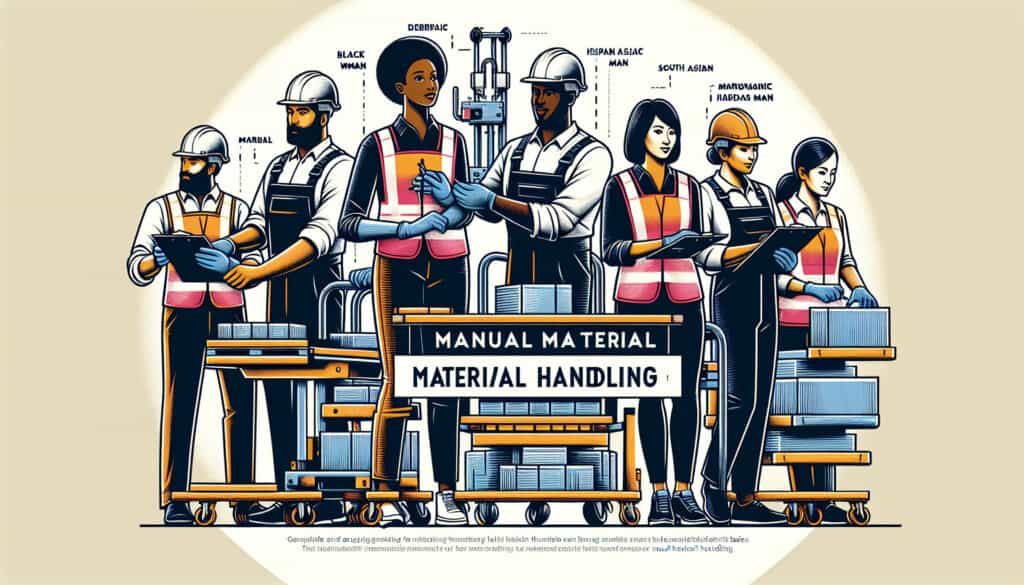To determine the maximum acceptable weights and forces for manual handling tasks.
- Metodologías: Clientes y marketing, Economía, Diseño de producto
Mesas de manipulación manual de materiales Liberty Mutual (Mesas Snook)

Mesas de manipulación manual de materiales Liberty Mutual (Mesas Snook)
- Mejora continua, Ergonomía, Human Factors, Ingeniería de factores humanos (HFE), Manufactura esbelta, Mejora de procesos, Gestión de calidad, Gestión de riesgos, Seguridad
Objetivo:
Cómo se utiliza:
- A set of tables that provide guidance on the maximum acceptable weights and forces for lifting, lowering, pushing, pulling, and carrying tasks. They are based on psychophysical data and are widely used in ergonomics to design safe manual handling tasks.
Ventajas
- Provides a scientific basis for designing safe manual handling tasks; Widely accepted and used in industry.
Contras
- Can be complex to use and interpret; May not be applicable to all situations.
Categorías:
- Ergonomía, Gestión de riesgos
Ideal para:
- Designing safe manual handling tasks to reduce the risk of musculoskeletal disorders.
The Liberty Mutual Manual Material Handling Tables, often referred to as Snook Tables, provide a standardized approach to assessing and mitigating risks associated with manual handling tasks. These tables derive their recommendations from psychophysical research, which examines human capabilities and limitations in the context of lifting, lowering, pushing, pulling, and carrying objects. Common applications include workplace ergonomics assessments across various industries such as manufacturing, warehousing, healthcare, and construction, where manual handling is prevalent. In project phases involving task design or risk assessment, ergonomists, health and safety professionals, and industrial engineers often utilize these tables to establish safe weight limits in manual handling tasks, thereby enhancing worker safety and productivity. The involvement of personnel from recursos humanos and occupational health is also crucial, as they can help implement training and develop policies based on the insights rendered from the tables. The primary advantage of employing the Snook Tables lies in their scientifically validated metrics, which provide objective guidance for developing safer handling procedures. This broad acceptance in industry not only helps companies comply with safety regulations but also supports initiatives aimed at reducing musculoskeletal disorders among employees. The application of these tables often leads organizations to comprometer in continuous improvements and reassessments of their manual handling protocols, ensuring long-term safety and efficiency in operational practices.
Pasos clave de esta metodología
- Identify the manual handling task and its specific requirements.
- Reference the Snook Tables to determine maximum acceptable weights and forces.
- Assess the postures and movements involved in the task.
- Evaluate the frequency and duration of the manual handling activity.
- Consider environmental factors, such as surface conditions and space constraints.
- Implement design modifications based on the analysis from the tables.
- Test the modified task for compliance with ergonomic standards.
- Monitor employee feedback and adjust the design as necessary.
Consejos profesionales
- Integrate task-specific risk assessments with Snook Tables to account for individual worker characteristics like height and strength.
- Regularly update and validate lifting and carrying recommendations by consulting with recent ergonomic research and field studies.
- Utilize feedback loops from employees during task observations to refine and adapt manual handling guidelines for various job roles.
Leer y comparar varias metodologías, recomendamos el
> Amplio repositorio de metodologías <
junto con otras más de 400 metodologías.
Sus comentarios sobre esta metodología o información adicional son bienvenidos en la dirección sección de comentarios ↓ , así como cualquier idea o enlace relacionado con la ingeniería.
Contexto histórico
1986
(si se desconoce la fecha o no es relevante, por ejemplo "mecánica de fluidos", se ofrece una estimación redondeada de su notable aparición)

Publicaciones relacionadas
Simulación de Monte Carlo
Pruebas basadas en modelos
Comprobación de modelos
Investigación con métodos mixtos
A prueba de errores (Poka-Yoke)
Pruebas del perfil de la misión